A Vision for Heterarchical Democracy and Conscious Community
Part 1 of 2
Introduction: The Great Unraveling
We stand at a threshold moment in human history. The old structures of power are crumbling not because they were inherently evil, but because they have outlived their evolutionary purpose. What we are witnessing is not merely the collapse of a political system, but the birth pangs of a new form of human organization—one that honors both individual sovereignty and collective wisdom.
The illusion of permanence that has gripped our institutions for centuries is finally dissolving. We are seeing through the carefully constructed mythology that has kept us trapped in cycles of domination and submission, hierarchy and oppression. This is not a moment for despair, but for profound recognition: we have been living in a dream, and now we are awakening.
The question before us is not whether we can return to some imagined golden age of the past—for that age never existed. The question is whether we have the courage to step into the unknown and create something entirely new. This is the invitation of our time: to become conscious participants in the evolution of human civilization itself.
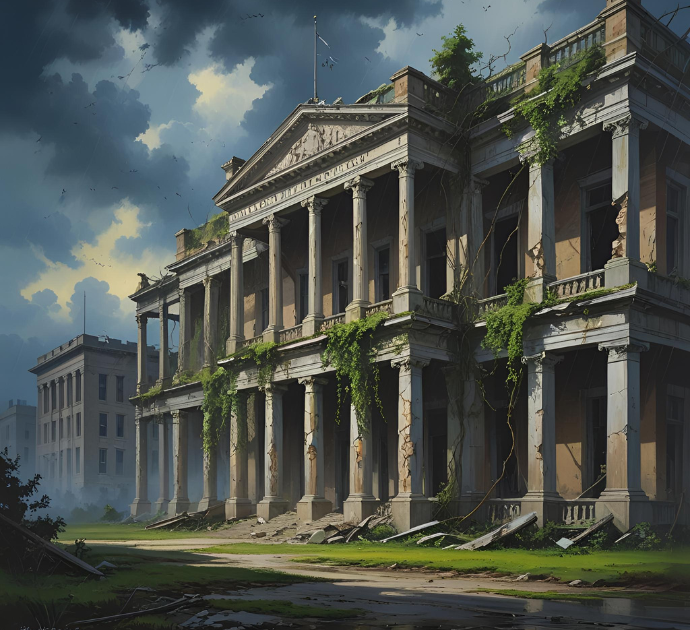
The Vacuum That Breeds Tyranny
Every authoritarian figure who has ever risen to power has done so by filling a vacuum—a space created by the absence of authentic leadership, genuine community, and meaningful purpose. This vacuum is not created overnight; it is the result of decades, even centuries, of structural disconnection from our deepest human values.
When we examine the conditions that allow demagogues to flourish, we find a consistent pattern: societies that have lost their connection to wisdom, communities that have forgotten how to listen to each other, and economic systems that treat human beings as expendable resources. The strongman emerges not because he is extraordinary, but because the ground has been prepared for someone—anyone—to promise simple answers to complex problems.
This is what we might call the “shadow of hierarchy”—the inevitable result of organizing society around domination rather than cooperation. In hierarchical systems, power flows from the top down, creating dependency, resentment, and ultimately, the conditions for tyranny. The people at the bottom of the pyramid are taught to look upward for salvation, while those at the top become increasingly disconnected from the reality of lived experience.
But there is another way. Throughout history, there have been examples of societies organized around different principles—communities that understood the sacred nature of collective decision-making, indigenous cultures that honored the wisdom of the circle, and spiritual traditions that recognized the interconnectedness of all life. These examples point toward what we might call “heterarchical consciousness”—a way of organizing that honors both individual gifts and collective wisdom.

The Illusion of Restoration
As the old systems crumble, there is a dangerous temptation to believe that we can simply restore what came before. This is perhaps the most insidious trap of all—the belief that if we can just return to “normal,” everything will be fine. But this normalcy was never actually normal. It was a slow-motion crisis that had been building for generations.
The pre-authoritarian era was not a time of peace and prosperity for all. It was a time when inequality deepened, when communities were systematically destroyed, when the environment was ravaged for profit, and when the seeds of our current crisis were being planted. The polite politics of that era masked deep structural violence, and its bipartisan consensus was often consensus around war, extraction, and the gradual erosion of human dignity.
To return to that system would be to rebuild on sand. It would mean resurrecting a political culture where appearance mattered more than substance, where donors dictated policy, and where public trust was exploited rather than earned. It would mean empowering the same forces that created the conditions for tyranny in the first place.
This is why the work before us is not restoration but transformation. We are not trying to fix a broken system; we are trying to birth an entirely new one. This requires us to think beyond the familiar categories of left and right, conservative and progressive, and instead ask deeper questions: What does it mean to be human? How do we organize society in ways that honor our deepest values? What would it look like to create systems that serve life rather than dominate it?
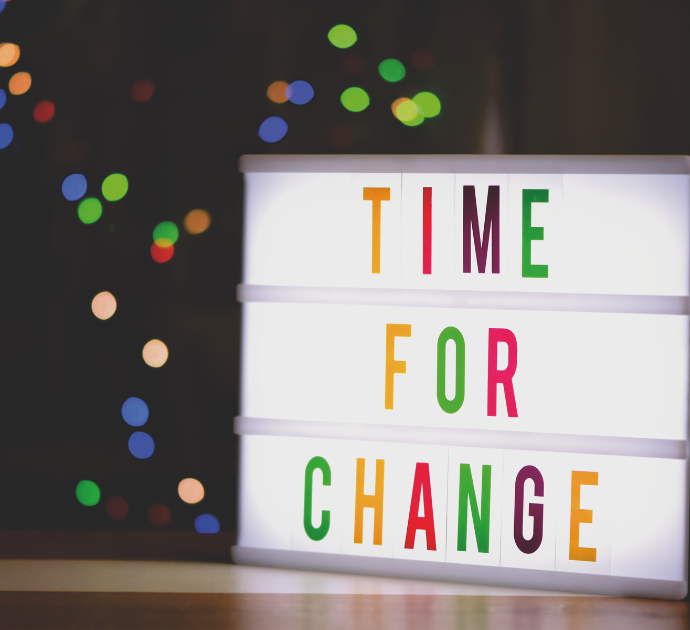
The Emergence of Heterarchical Consciousness
The concept of heterarchy offers us a radically different way of thinking about organization and power. Unlike hierarchy, which is based on domination and submission, heterarchy is based on the recognition that different forms of intelligence and wisdom are needed for different situations. In a heterarchical system, leadership is fluid, contextual, and based on competence and wisdom rather than position or force.
This is not chaos or the absence of structure. It is a more sophisticated form of organization—one that recognizes that the challenges we face require collective intelligence, not individual brilliance. It acknowledges that no single person has all the answers, but that together, we can access wisdom that none of us could reach alone.
In practical terms, heterarchical organizing might look like worker cooperatives where decisions are made collectively, neighborhood assemblies where community members have direct input on the issues that affect their lives, or consensus-based decision-making processes that ensure all voices are heard. It might involve rotating leadership, where different people take responsibility for different aspects of a project based on their skills and interests.
But heterarchy is not just about organizational structure—it is about consciousness. It requires us to let go of the ego’s need to dominate and control, and instead cultivate the capacity to listen, to collaborate, and to trust in the wisdom of the collective. This is perhaps the most challenging aspect of the transition we are facing: it requires us to evolve not just our institutions, but our very way of being in the world.

Synarchy: The Sacred Order of Mutual Service
Complementing the concept of heterarchy is the principle of synarchy—the idea that true order arises not from domination, but from mutual service. In a synarchical system, each part serves the whole, and the whole serves each part. This is the natural order we see in healthy ecosystems, in thriving communities, and in the human body itself.
Synarchy recognizes that we are not separate individuals competing for scarce resources, but interconnected beings whose wellbeing is fundamentally linked. When we serve others, we serve ourselves. When we care for the community, we care for our own future. This is not mere altruism—it is enlightened self-interest based on the recognition of our fundamental interdependence.
In practical terms, synarchical organizing might involve gift economies where people contribute according to their abilities and receive according to their needs, mutual aid networks where communities support each other in times of crisis, or regenerative economic systems that prioritize the health of the whole over the profit of the few.
But like heterarchy, synarchy is fundamentally about consciousness. It requires us to expand our identity beyond the narrow confines of the ego and recognize ourselves as part of a larger web of life. This is perhaps the most radical shift of all—from a consciousness of separation to a consciousness of unity, from a worldview based on competition to one based on collaboration.

The Technology of Transformation
The transition to heterarchical and synarchical forms of organization is not just a political or economic project—it is a spiritual one. It requires us to develop what we might call “technologies of transformation”—practices and processes that help us embody the consciousness that these new forms of organization require.
These technologies might include circle processes that help groups make decisions collectively, nonviolent communication practices that help us resolve conflicts without domination, or contemplative practices that help us connect with our deeper wisdom. They might involve art, music, and storytelling that help us imagine new possibilities, or rituals and ceremonies that help us mark important transitions and honor our connections to each other and to the earth.
The key insight here is that consciousness and culture are not separate from politics and economics—they are the foundation upon which all human organization is built. If we want to create new forms of governance, we must first cultivate the consciousness that makes them possible.
This is why the work of transformation is both inner and outer, both personal and collective. We cannot create healthy communities without healthy individuals, and we cannot create healthy individuals without healthy communities. The two go hand in hand, each supporting and reinforcing the other.
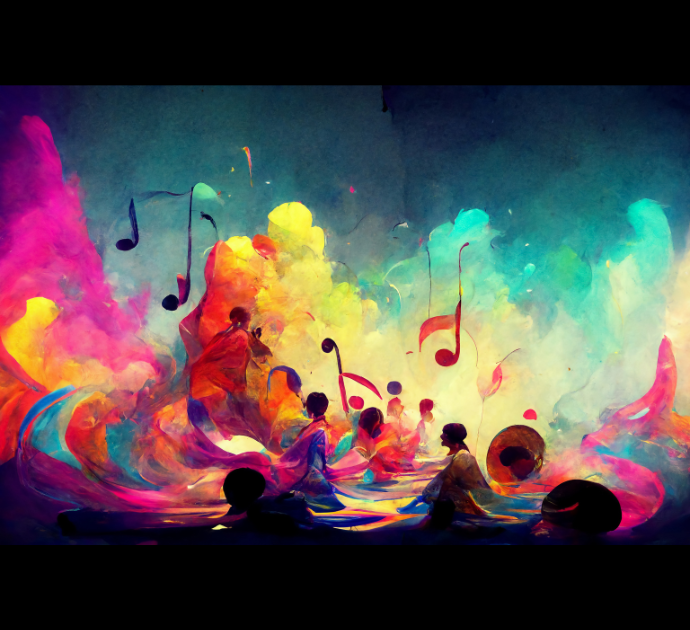
The Death of the Savior Complex
One of the most important aspects of this transition is the death of what we might call the “savior complex”—the belief that someone else will come to rescue us from our problems. This complex is deeply embedded in hierarchical consciousness, which teaches us to look upward for salvation rather than inward for wisdom.
The savior complex manifests in many ways: the belief that the right political candidate will fix everything, that technology will solve all our problems, or that some external force will intervene to save us from ourselves. But this belief is not only disempowering—it is dangerous. It keeps us in a state of dependency and prevents us from taking responsibility for our own lives and communities.
The transition to heterarchical consciousness requires us to let go of this complex and instead cultivate what we might call “distributed leadership”—the recognition that we are all leaders, that we all have gifts to offer, and that we all have a responsibility to contribute to the wellbeing of the whole.
This does not mean that everyone has the same role or the same level of responsibility. It means that leadership is contextual, that different people lead in different situations, and that the goal is not to find the perfect leader but to create conditions where everyone can contribute their unique gifts.

The Ecology of Wisdom
As we move toward new forms of organization, we must also develop what we might call an “ecology of wisdom”—systems and practices that help us access and integrate different forms of knowledge and understanding. This includes not only intellectual knowledge, but also emotional wisdom, somatic intelligence, and spiritual insight.
In hierarchical systems, wisdom is often hoarded by those in power, creating artificial scarcity and dependency. In heterarchical systems, wisdom is shared freely, creating abundance and empowerment. This requires us to develop new approaches to education, communication, and decision-making that honor the full spectrum of human intelligence.
An ecology of wisdom might include practices like council circles where people share their truth without judgment, learning communities where people teach and learn from each other, or consensus processes where groups integrate different perspectives to find solutions that work for everyone.
The key insight here is that wisdom is not something that can be downloaded or transmitted—it must be cultivated through practice and experience. This is why the transition to new forms of organization cannot be rushed or forced. It must be grown organically, through patient cultivation of the conditions that allow wisdom to emerge.
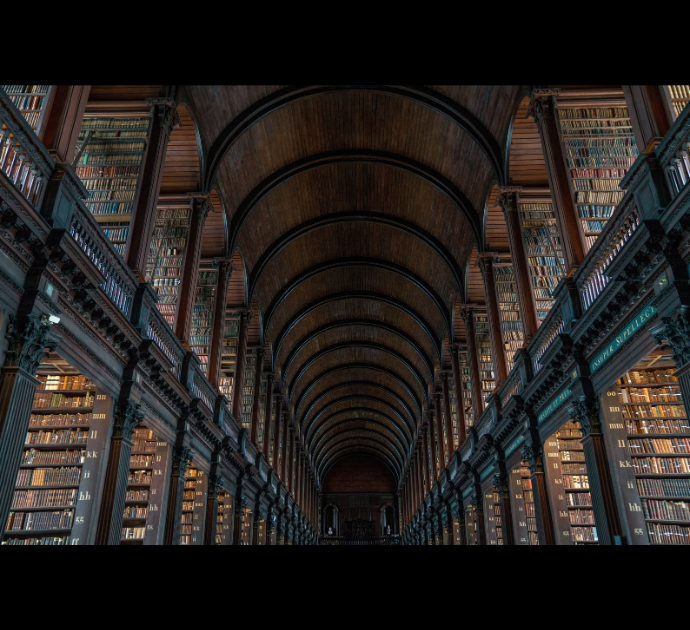
The Great Remembering
What we are experiencing is not just a political or economic transition—it is what we might call a “Great Remembering.” We are remembering ways of being and organizing that our ancestors knew, that indigenous cultures have preserved, and that our hearts have never forgotten.
This remembering is not about romanticizing the past or trying to return to some imagined golden age. It is about recognizing that the wisdom we need to navigate our current challenges already exists—it has simply been suppressed or forgotten by cultures organized around domination and control.
The remembering includes practical wisdom about how to make decisions collectively, how to resolve conflicts without violence, how to organize economies that serve life rather than exploit it, and how to create communities that honor both individual sovereignty and collective responsibility.
But it also includes deeper wisdom about the nature of consciousness itself, about our relationship to the earth and to each other, and about the spiritual dimensions of human existence. This is wisdom that cannot be reduced to techniques or strategies—it must be embodied and lived.

The Courage to Create
As we stand at this threshold moment, we are being called to summon extraordinary courage—not the courage of the warrior who fights against enemies, but the courage of the creator who brings new worlds into being. This is the courage to let go of the familiar, even when it is dysfunctional, and to step into the unknown with faith that something better is possible.
This courage is not something we can manufacture through willpower or positive thinking. It emerges naturally when we connect with our deepest values, when we feel the support of community, and when we remember that we are part of something larger than ourselves.
The transition to new forms of organization will not be easy. It will require us to face our fears, to heal our wounds, and to let go of old patterns that no longer serve us. It will require us to learn new skills, to develop new capacities, and to trust in processes that we cannot control.
But it will also be deeply fulfilling, because it will allow us to express our deepest gifts, to contribute to something meaningful, and to participate in the great work of our time—the creation of a world that works for all life.
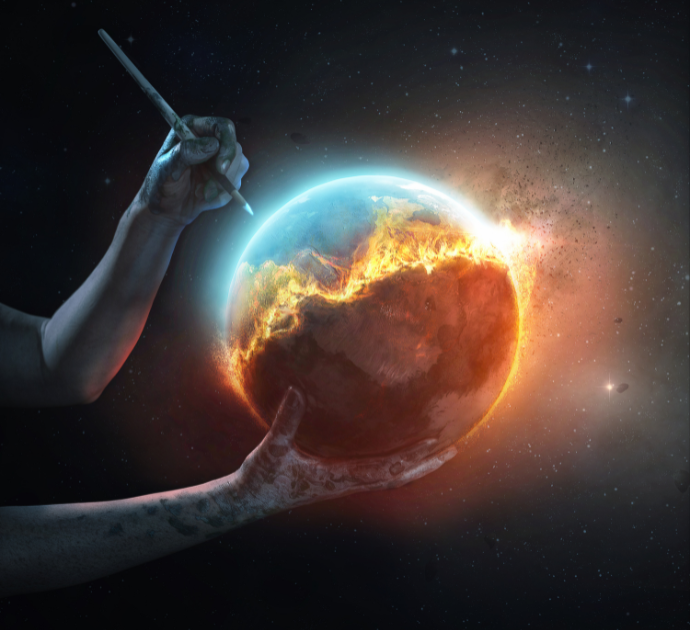
Conclusion: The Call of Our Time
We are living through one of the most significant transitions in human history. The old world is dying, and a new world is struggling to be born. We can choose to cling to the familiar patterns of the past, or we can choose to midwife the emergence of something entirely new.
This is not a choice we can make once and then forget about. It is a choice we must make every day, in every interaction, in every decision. It is the choice to embody the consciousness that makes new forms of organization possible, to practice the skills that heterarchy and synarchy require, and to have the courage to create the world we know is possible.
The time for waiting is over. The time for action is now. Not the frantic action of reaction, but the purposeful action of creation. Not the action of resistance alone, but the action of regeneration. We are being called to become the ancestors that future generations will thank, the ones who had the courage to break the cycles of domination and create something beautiful in their place.
This is the call of our time, and it is a call that each of us must answer in our own way. The future is not something that happens to us—it is something we create together. And the time to begin is now.
This concludes Part 1 of “Beyond the Illusion: Awakening to New Forms of Governance.” Part 2 will explore practical applications of these principles, including specific models for economic transformation, information integrity, and community resilience.
High Priestess Agape Covens
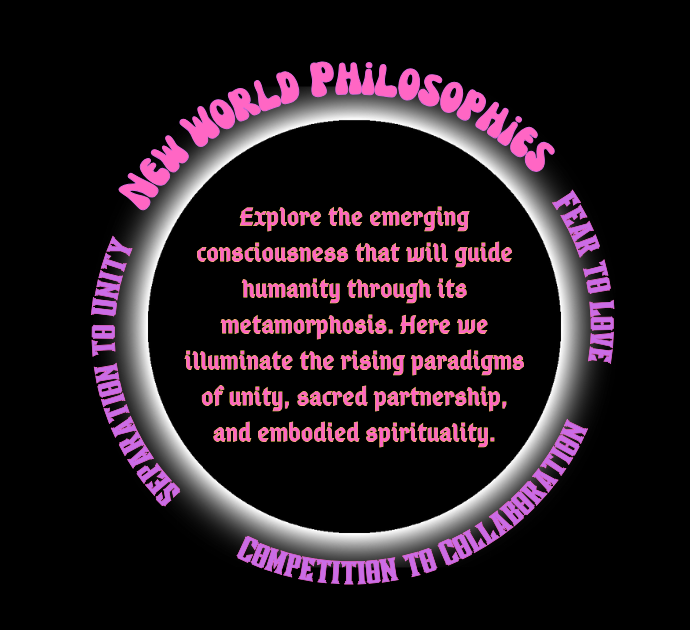
#EconomicJustice, #CommunityResilience, #CooperativeEconomics, #WorkerCooperatives, #WealthCooperatives, #WealthBuilding, #InformationTechnology, #CommunityControlled, #Decentralized, #CollectiveIntelligence, #InformationIntegrity, #Regenerative, #MutualAid, #CollectiveDecisionMaking, #CommunityLandTrusts, #GiftEconomy, #TimeBanks #NewWorldPhilosophy, #AgapeCovens
